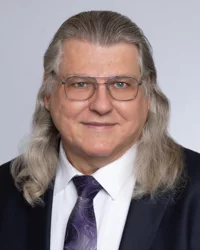There was a time when workers’ compensation claims did not involve vocational consultants.
Vocational rehabilitation benefit was adopted under Governor Ronald Reagan and the vocational consultant was introduced into workers’ compensation litigation.
Initially, a vocational consultant expert would coordinate a worker’s transferable skills and interests into a vocational plan for on-the-job training or further education to return the worker to suitable gainful employment.
For almost 20 years, vocational consultant duties were limited to returning workers to suitable gainful employment.
In 1983, it all changed with the Supreme Court decision in Leboeuf v. WCAB and Alameda-Contra Costa Transit District (1983) 48 CCC 587. In the Leboeuf case, the Supreme Court considered the reopening of applicant vocational rehabilitation case. In brief, applicant went to Trial with a 60% permanent disability report by defense and a 100% report by applicant. The WCJ awarded 60% permanent partial disability. However, based on the 100% report, the Rehabilitation Unit found applicant unable to return to suitable gainful employment and therefore not a Qualified Injured Worker (QIW). The Supreme Court found that the determination of the Rehabilitation Unit that applicant was foreclosed from suitable gainful employment solely on the basis of the work injury was a factor the WCJ should consider in determining which medical reports more accurately reflected the applicant’s disability.
Later decisions limited vocational evidence so factors such as age, illiteracy, work experience, lack of motivation, and other “mixed factors” may not be used to increase the permanent disability awards. L.C. James v. WCAB (1986) 51 CCC 45 (Writ denied).
The 2004 adoption of a SB 899 incorporated a “future earning” component into the rating string. The litigation process was inundated by a tsunami of vocational consultant evidence, generally via direct testimony. The evidentiary issues caused adoption of Labor Code §5703(j) taking of vocational consultant evidence by way of report.
Post SB 899 litigation involving the future earning component of the rating string culminated in “the Ogilvie cases” to rebut the permanent disability rating schedule. Ogilvie III outline three bases for adopting an unscheduled rating:
-
- showing a factual error in the application of a formula or the preparation of the schedule;
- when the injury impairs applicant’s rehabilitation causing greater diminished future earning capacity than reflected in a scheduled rating;
- when applicant can demonstrate nature/severity of injury is not captured within the sample of injuries used to compute the adjustment factor.
The first and third methods are generally not applicable as these are direct attacks on the rating schedule as a whole and would require a statistical analysis beyond the scope of any individual claim. The second approach provides the individual claim an opportunity to show, by vocational consultant evidence, that impairment is greater than the scheduled rating.
We have quite a few cases that assist in the application of this provision. A good place to start an analysis is Contra Costa County v. WCAB (Dahl) (2015) 80 CCC 1119. This decision reinforces Ogilvie III determination that we do not substitute a vocational expert, WCJ or WCAB preferred methodology for the statutory rating system. The first showing to a successful rebuttal of the scheduled rating is that applicant is not amenable to retraining. Further, the First Appellate District states “… we are skeptical of the WCAB’s conclusion that an employee may invoke the second Ogilvie rebuttal method where the inability to rehabilitate results in less than a 100% permanent disability.” As a result, we are seeing fewer vocational consultant reports. When we do see these reports, is be in a circumstance where applicant attorney is trying to push an award to 100% permanent total disability. Often this is occurring under Labor Code §4662(b).
When evaluating the reports, it is good to go back to the basics of Leboeuf, just as the court did in Ogilvie III. Reports that find applicant cannot be vocationally rehabilitated must base that finding on the work injury in question, not “mixed factors.” So often we see applicant attorneys pushing their Social Security disability clients as 100% permanently totally disabled before the California WCAB. This will depend upon the facts but generally they are comparing at apples and oranges based on the disability factors.
Note that if an applicant has a cumulative trauma and a specific injury all body parts might not apply towards the 100% rating, see Navarro v. WCAB (2016) 81 CCC 291 (Writ denied).
Vocational consult experts and their report should be handled as any other Qualified Medical Examiner. Look at the report to see if it makes sense. If there is a conclusion the applicant will not benefit from vocational rehabilitation, what is the basis of the opinion. Is it based upon the workplace injury/exposure or combination of factors?
Although these issues are, at first blush, somewhat complicated, most of these knots can be untied. Having difficulty “untying” the VR knot? Don’t hesitate to contact me!
Theodore G. Schneider is a Partner based out of our Ontario location. Mr. Schneider have practiced workers’ compensation defense for almost 30 years. You can find additional information about his experience at: https://www.bradfordbarthel.com/profiles/theodore-schneider/. He can be reached at (909) 476-0552 or tschneider@bradfordbarthel.com.
Viewing this website does not form an attorney/client relationship between you and Bradford & Barthel, LLP or any of its attorneys. This website is for informational purposes only and does not contain legal advice. Please do not act or refrain from acting based on anything you read on this site. This document is not a substitute for legal advice and may not address every factual scenario. If you have a legal question, we encourage you to contact your favorite Bradford & Barthel, LLP attorney to discuss the legal issues applicable to your unique case. No website is entirely secure, so please be cautious with information provided through the contact form or email. Do not assume confidentiality exists in anything you send through this website or email, until an attorney/client relationship is formed.


